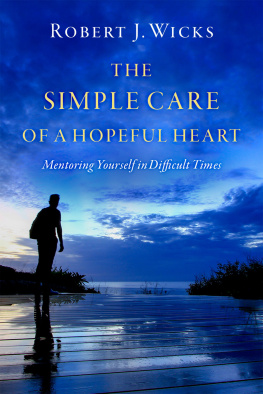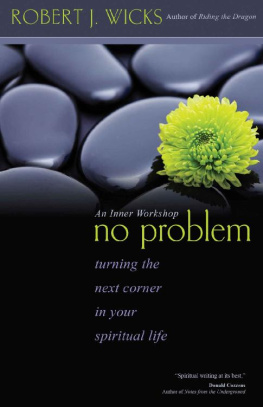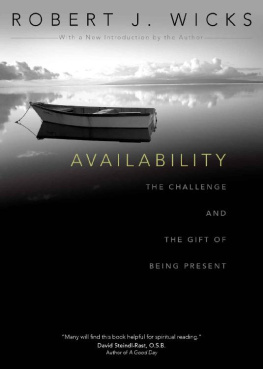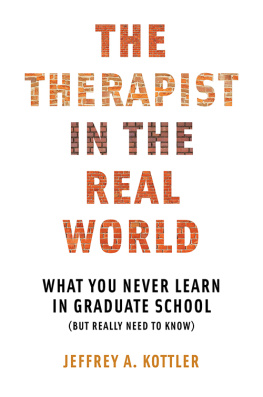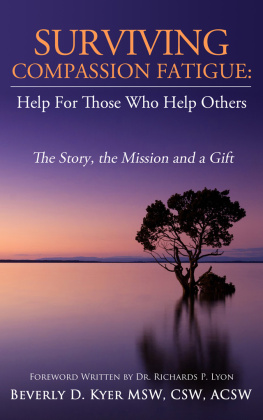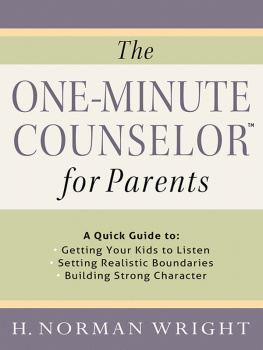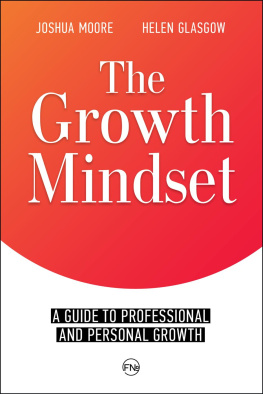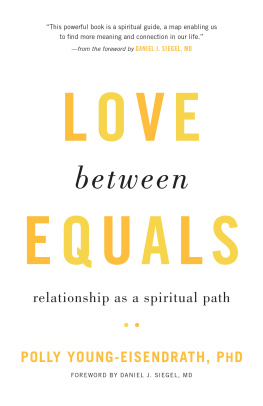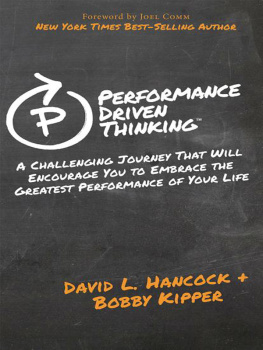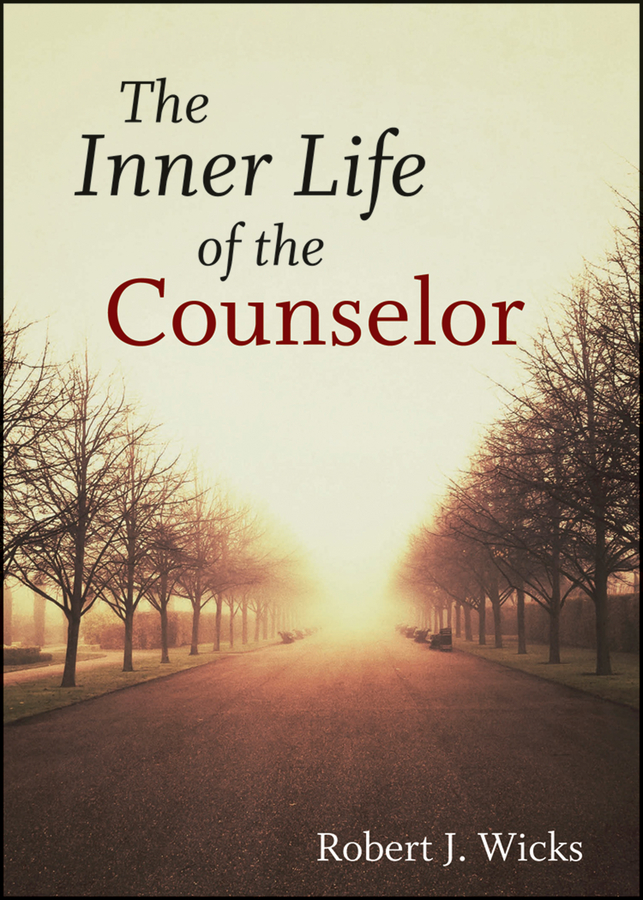
Table of Contents
Guide
List of Tables
- Chapter 3: Recognizing the Cues of Subtle Mindlessnesss
- Chapter 5: Experiencing a New Type of Counselor Self-Nurturance
Pages
The Inner Life of the Counselor
Robert J. Wicks
Copyright 2012 by John Wiley & Sons, Inc. All rights reserved.
Published by John Wiley & Sons, Inc., Hoboken, New Jersey.
Published simultaneously in Canada.
No part of this publication may be reproduced, stored in a retrieval system, or transmitted in any form or by any means, electronic, mechanical, photocopying, recording, scanning, or otherwise, except as permitted under Section 107 or 108 of the 1976 United States Copyright Act, without either the prior written permission of the Publisher, or authorization through payment of the appropriate per-copy fee to the Copyright Clearance Center, Inc., 222 Rosewood Drive, Danvers, MA 01923, (978) 750-8400, fax (978) 646-8600, or on the web at www.copyright.com . Requests to the Publisher for permission should be addressed to the Permissions Department, John Wiley & Sons, Inc., 111 River Street, Hoboken, NJ 07030, (201) 748-6011, fax (201) 748-6008.
Limit of Liability/Disclaimer of Warranty: While the publisher and author have used their best efforts in preparing this book, they make no representations or warranties with respect to the accuracy or completeness of the contents of this book and specifically disclaim any implied warranties of merchantability or fitness for a particular purpose. No warranty may be created or extended by sales representatives or written sales materials. The advice and strategies contained herein may not be suitable for your situation. You should consult with a professional where appropriate. Neither the publisher nor author shall be liable for any loss of profit or any other commercial damages, including but not limited to special, incidental, consequential, or other damages.
This publication is designed to provide accurate and authoritative information in regard to the subject matter covered. It is sold with the understanding that the publisher is not engaged in rendering professional services. If legal, accounting, medical, psychological or any other expert assistance is required, the services of a competent professional person should be sought.
Designations used by companies to distinguish their products are often claimed as trademarks. In all instances where John Wiley & Sons, Inc. is aware of a claim, the product names appear in initial capital or all capital letters. Readers, however, should contact the appropriate companies for more complete information regarding trademarks and registration.
For general information on our other products and services please contact our Customer Care Department within the United States at (800) 762-2974, outside the United States at (317) 572-3993 or fax (317) 572-4002.
Wiley publishes in a variety of print and electronic formats and by print-ondemand. Some material included with standard print versions of this book may not be included in e-books or in print-on-demand. If this book refers to media such as a CD or DVD that is not included in the version you purchased, you may download this material at http://booksupport.wiley.com . For more information about Wiley products, visit www.wiley.com .
Library of Congress Cataloging-in-Publication Data:
Wicks, Robert J.
The inner life of the counselor / Robert J. Wicks.
p. cm.
Includes bibliographical references and index.
ISBN 978-1-118-19374-7 (hardback); ISBN 978-1-118-22762-6 (ebk)
ISBN 978-1-118-23340-5 (ebk); ISBN 978-1-118-26526-0 (ebk)
1. Mental health personnelLife skills guides. 2. Mental health personnelJob stress. 3. Mental health personnel and patient. I. Title.
RC440.8.W53 2012
616.89dc23
2012008101
For Dan Boyd, Geraldine Fialkowski, Brendan Geary, Eugene Hasson, J. Shep Jeffreys, Michaele Kulick, John McLaughlin, Rick Parsons, and Tom Rodgerson. All consummate clinicians, wonderful human beings, and faithful friends
In That Place of Sanity: The Inner Life of the Counselor
A Brief Introduction
A psychiatrists wife once questioned him about the reason for his loyalty to his mentor, the Zen master, Shunryu Suzuki. She wondered why he was so faithful to the guidance he was receiving. He responded by saying, Where he is, is where I want to be, in that place of sanity (Chadwick, 1999, p. 313). The place he speaks about is where all counselors, therapists, and both professional and nonprofessional caregivers wish to benot only for themselves, but also so they are able to invite others into this space.
In order for this to happen, as counselors we must first take basic steps to encourage resiliency. This includes such activities as self-care, stress management, and those other elements that encourage continued personal growth and professional development. Yet, those who live rich lives as guides and caregivers have realized there is more to a counselors life than remaining resilientas important as that is. There is the gestalt of the core elements responsible for the way through which all of the counselors daily and professional encounters are experiencedwhat we may call here the inner life, a place that should be explored and nourished through the understanding and practice of mindfulness.
How we encounter life, our life, as well as the intense experiences and needs of others, determines whether we will deepen, remain stagnant, or simply become disillusioned as persons and helpers. As I have maintained and noted elsewhere (The Resilient Clinician, Oxford University Press, 2008; and Riding the Dragon, Sorin Books, 2003), it is not the amount of darkness in the world that matters. It is not even the amount of darkness in ourselves that matters. Instead, in the end, it is how we stand in that very darkness that makes the ultimate difference in how peaceful, joyful, grateful, and satisfied we will be both professionally and personally in life.
In the last several years the topic of mindfulness has received expanded attention from us as counselors. In addition, over the past decade, the positive psychology movement fostered by Csikszentmihalyi (1990), Fredrickson (2002), Seligman (2002), and others has helped us see that we need to shift our angle of vision to help our clients (and ourselves, for that matter) to experience greater balance and fullness in life. However, long before these two psychological movements arrived on the scene, the wisdom literature of world spiritualities (albeit usually not always in an empirical way) was addressing the question of how we can live more meaningfully, mindfully, and fully.
In this book, with a focus specifically on the counselor, I wish to tap into some of this classical and contemporary spiritual and psychological wisdom to provide encouragement to professional helpersin what I believe to be simple, profound waysto take note of their lives more gently and clearly. The goal is to help them to:
- Let go more readily of the nonessential or destructive.
- Instill a greater sense of mindfulness.
- Fully embrace through practice those elements that can enhance maintaining a healthier perspectiveno matter what darkness is being faced in ones clinical practice or personal life.
To encourage a lifelong journey steeped in this wisdom, a list of recommended readings and an opportunity to retreat and reflect on the thoughts of modern mentors of alonetime are also provided at the books conclusion.
Next page

